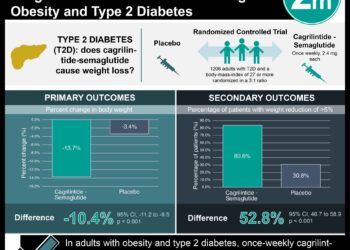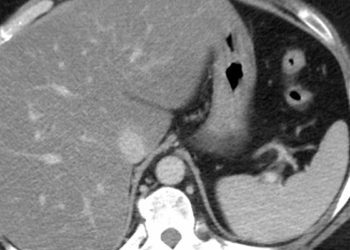Increased mortality observed in type 1 diabetes
1. In a large, prospective, observational study, overall death rate was significantly higher among patients with type 1 diabetes compared to controls, even among those with the best glycemic control.
2. There was a trend of increasing risk of death from any cause and from cardiovascular causes with higher mean glycated hemoglobin levels.
Evidence Rating Level: 3 (Average)
Study Rundown: Type 1 diabetes is an autoimmune condition that is commonly diagnosed during childhood or adolescence and results from the destruction of pancreatic beta cells that normally produce insulin. It is associated with premature death, largely due to complications of diabetes including cardiovascular disease. Guidelines recommend strict glycemic control to reduce risk of complications, however, there is limited evidence regarding levels of glycemic control and effect on mortality. This Swedish observational study involved over 30,000 patients with type 1 diabetes and over 150,000 controls and evaluated the effect of varying levels of glycemic control (measured by mean glycated hemoglobin level) on excess mortality in patients with diabetes. Important findings include that the risk of death from all causes as well as death from cardiovascular causes specifically in patients with on-target glycemic control were still two-fold that of the general population. These risks rise to around 8 to 10 times that of the general population in patients with poor glycemic control. Morbidity and premature death thus remain challenges in type 1 diabetes even when meeting recommended levels of glycemic control.
Click to read the study, published today in NEJM
Relevant Reading: Risk of cardiovascular disease and total mortality in adults with type 1 diabetes: Scottish Registry Linkage Study
In-Depth [case-control study]: This prospective observational study included 33,915 patients with type 1 diabetes registered in the Swedish National Diabetes Register and 169,249 controls. Five matched controls were randomly selected from the general population for each case. The mean follow-up was 8.0 years in the diabetes group and 8.3 years in the control group. The adjusted hazard ratio for death from any cause among patients with diabetes compared to controls was 3.52 (95% CI, 3.06 to 4.04). The adjusted hazard ratio for death from cardiovascular causes was 4.60 (95% CI, 3.47 to 6.10). A significant interaction was detected between diabetes and gender – the hazard ratio for death from cardiovascular causes was higher in women (P<0.001). Both the risk of death from any cause and from cardiovascular causes increased with higher mean glycated hemoglobin levels.
Image: PD
©2014 2 Minute Medicine, Inc. All rights reserved. No works may be reproduced without expressed written consent from 2 Minute Medicine, Inc. No article should be construed as medical advice and is not intended as such by the authors, editors, staff or by 2 Minute Medicine, Inc.





![Early tube feeding unable to reduce infections in pancreatitis [PYTHON trial]](https://www.2minutemedicine.com/wp-content/uploads/2014/11/Pankreatitis_exsudativ_CT_axial-75x75.jpg)

